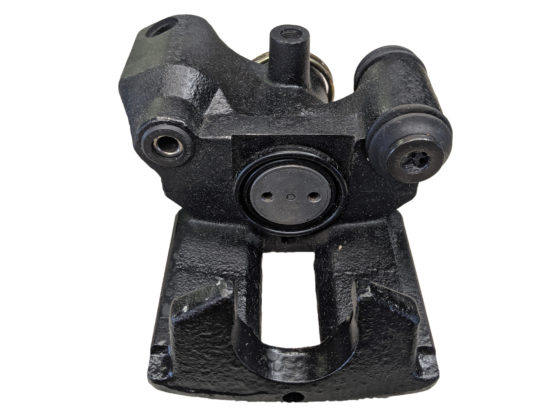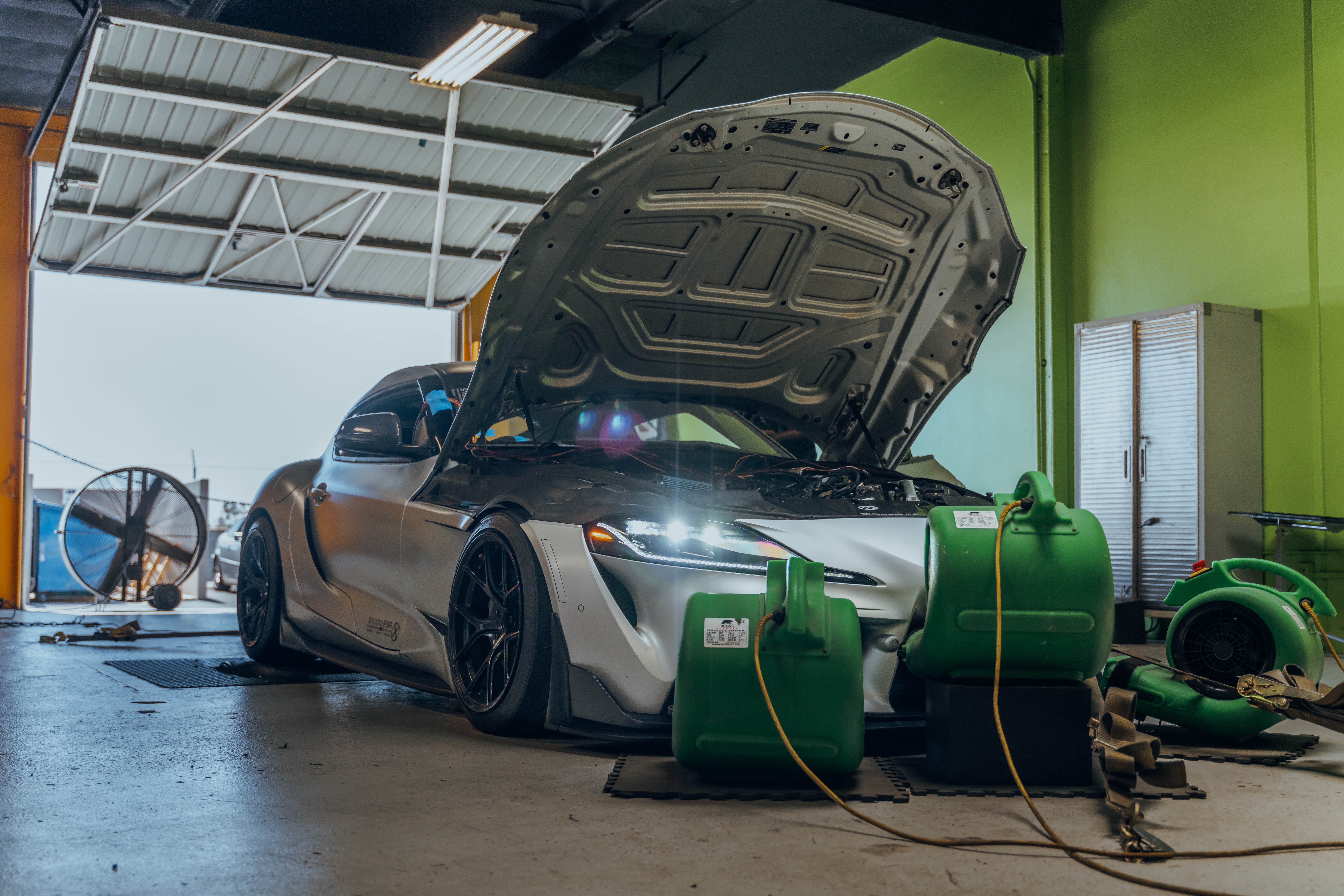
The R35 GT-R is a marvelous machine capable of amazing performance. However, it is a heavy beast weighing in at anywhere from 3820 to 3900 lbs depending on year and model, and its sheer mass sometimes hurts its performance. The car weighs over 800 lbs more than our Project GT3RS for instance and it allows the GT3 to outperform the R35 with less power and torque. The area where the weight seems to hurt the car the most is in the braking department. Even though the R35 comes with huge Brembo six-piston front and four-piston rear brakes, when you add larger stickier tires and more power, they suddenly become inadequate and fade prone. The other issue is that they make tons of the grossest, blackest, most sticky, corrosive brake dust ever, seemingly in minutes!
Although we had already upgraded our brakes with oversized Brembo rotors, we came upon a set of what are probably the ultimate brake upgrades for the R35. In 2020, JDM Nismo edition R35’s came with huge Carbon Ceramic or CCM brakes from the factory. Now in 2021, these brakes are available on the US Nismo edition. Now, these brakes are very expensive, on a Porsche for instance, they are a 20k option, and some retailers basically sell this system on the aftermarket for something crazy like $15,500. We were lucky enough to find a lightly used set for much less in Japan and if you are patient so can you.
The price is high but there are some mitigating factors. CCM brakes last a very long time on the street. The rotors can possibly last for the lifetime of the car and the pads, 100k miles. CCM brakes are very light and can remove a lot of rotating and unsprung weight off of the car. CCM brakes can be very heat resistant and work well for racing, however, they can wear quickly in track conditions and not be very cost-effective. Lastly, CCM brakes make almost no brake dust and what they make is light-colored and not corrosive.

CCM rotors are made by laying up carbon fiber with a phenolic resin into a mold that resembles the finished disc to make a blank. The blank is placed in an autoclave with a controlled atmosphere with no oxygen with a silicon puck in the middle of the rotor. Much heat is applied and the resin is consumed in an airless process called pyrolysis leaving a carbon matrix behind. The silicon melts and is absorbed by the remaining carbon matrix like a candle wick. The result is a carbon matrix full of silicon carbide. The resultant rotor is very light with good heat and abrasion resistance. According to Brembo, their CCM material has 85% more thermal conductivity than iron and twice the thermal emissivity. This sounds too good to be true but since CCM has only about 30% of the mass of iron, The thermal capacity isn’t quite as good for the same given size of the rotor. Other CCM rotor companies like Racing Brakes have other numbers but this is what Brembo claims about their rotors. Because the thermal capacity is lower, a CCM rotor should be bigger to make up for some of this. One of the bad things about GT-R conversion rotors on the aftermarket is that the rotors are the same size as stock but these OEM engineered CCM rotors are much bigger.

The CCM front rotors are a huge 410mm in diameter and 38mm thick. This is a lot bigger than the 380mm x 34mm CBA R35 or the 390mm x 32.8mm DBA R35. Also, the CCM rotors have a very wide annulus, having a pad contact area almost twice as wide and the standard brakes. The rotors have significantly different expansion characteristics than iron and need to float a lot on the alloy rotor hats. The hats hold the rotor via bobbins to allow a lot of float and have a lot of drive surface area so as not to eat into the material. Stainless leaf springs reduce any potential rattling noise this float can produce.

You can see how wide the friction face of the rotors is in this picture, almost twice as wide as stock. This gives the pads a lot of bite and sensitivity and also having more pad volume and swept area means longer life.




11 comments
As always, great content. Thanks for all the info on parts I can only dream of having. I feel I can’t even afford to read the article. (I’m one of your IG followers and long time SCC subscriber)
I personally don’t think they are cost-effective but they sure are cool!
did you guys weigh the rotors? kinda curious about the actual weight difference over just the generic 30% lighter…
Yes on the last page, we saved 40.4 lbs over the OEM brake system.
With such a difference in rotor diameter and a greater difference front vs rear, does the brake bias change at all? 40lbs of rotating and unsprung mass saved is crazy. Makes the price seem realistic if you’re chasing the absolute best feeling possible.
No, it doesn’t change, it’s factory-engineered.
I had always been told that larger rotors on a street car are actually detrimental, since it takes longer for them to reach optimal temperature for good braking. Does the same apply to carbon ceramic rotors?
That’s not true at all. Bigger brakes allow you to run streetable less aggressive pads on the track. Race pads will literally eat rotors on the street in a few hundred miles. Big brakes allow true dual-purpose use. More brake power is typically also easier to modulate.
Just out of curiosity, can you recommend any places to source these on the used Japanese market like you guys did?
I used google to find a set and had a Japanese friend ship them to me.
There’s a website called, Croooober.com, that you might want to check out.